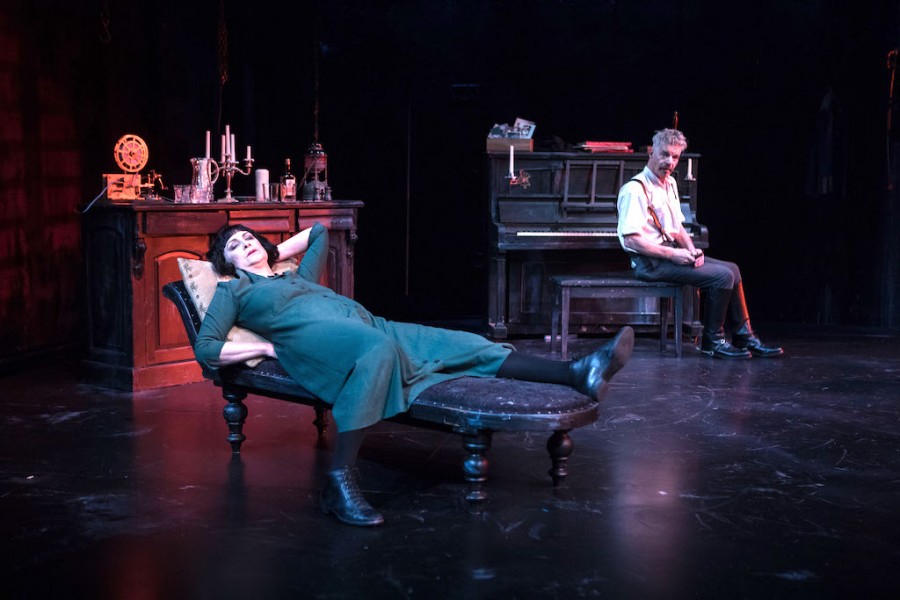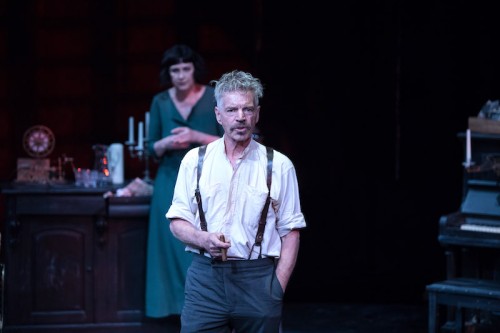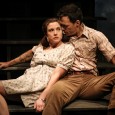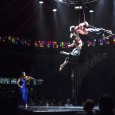The marital hell that sustains Edgar and Alice is obvious even before the lights go up on Brian Thomson’s fabulously dark set. Their body language, the overturned table and chairs, the general air of gloom and decay are all there, and then Edgar (Colin Friels) starts pounding on a flat piano key. “It’s autumn,” he declares. “Outside and in.”
Till death us do part can’t come fast enough for these two, he a captain in the military and largely redundant, she an actress who gave up her career to marry him. Their mutual hatred has driven away friends and family and they are marooned on their little island off the coast of Sweden, free to wallow in their own misery – and contemplate their looming silver wedding anniversary. The only thing that excites Pamela Rabe’s long-suffering and spiteful Alice is the hope that Edgar’s heart condition will finish him off quickly, and she’ll do whatever it takes to bring that about. And then her cousin Kurt (Toby Schmitz) arrives, like a lamb to the slaughter. In a home where even the domestic staff have deserted, Kurt will be lucky to get out alive.
This is a dream cast, with Judy Davis in the director’s chair, and the production is blackly brilliant. This production uses May-Brit Akerholt’s translation, and there are some wonderfully bitter and funny lines. This Dance of Death is marriage as a blood sport, played for laughs.
Friels’ Edgar is churlish, more than slightly mad and not at all well; in his spiked helmet and brandishing his sword he is mesmerising, but not all that threatening. Rabe’s Alice veers from sheer malevolence to tragi-comic coquettishness when she sets her sights on Kurt; her entrance in full length vampish red velvet is not easily forgotten. Schmitz is as debonair as a Fred Astaire in white tie and tails (no tap shoes, this is not his dance), but his own unravelling in the grip of a double act of manipulation is inevitable.
And brief mention to Georgia Avery who, as the deserting domestic, gets only one line, but she delivers it beautifully!
Edgar and Alice’s emotional state and isolation are reflected in the set, literally. Thomson has designed a moat around the stage, and Matt Scott’s moody lighting makes it blood red. The backdrop – shades of dark grey and black, spattered with red and graffiti (Hell on Earth, in case we are in any doubt) – is a two-dimensional battlefield, with the shadow of a portcullis adding to the claustrophobic atmosphere. Paul Charlier’s discordant score adds to the unease.
August Strindberg was no stranger to unhappy marriage. He had three attempts at it, all with younger women, and all failed. So no need to ponder at the bitterness and cynicism in The Dance of Death, written more than 100 years ago, although it would be interesting to know more about what brought Edgar and Alice to this not-so-pretty pass. It is not difficult to see it as a forerunner to Who’s Afraid of Virginia Woolf.
The Death of Dance by August Strindberg is at the Upstairs Theatre, Belvoir St Theatre until December 23.







